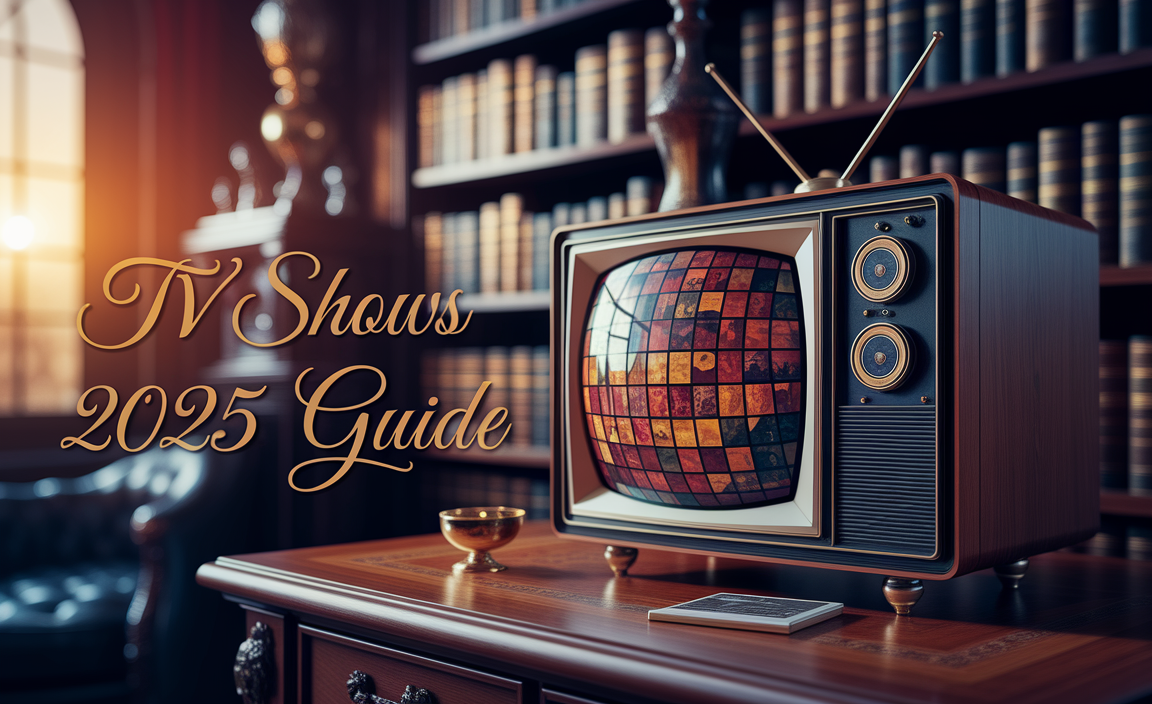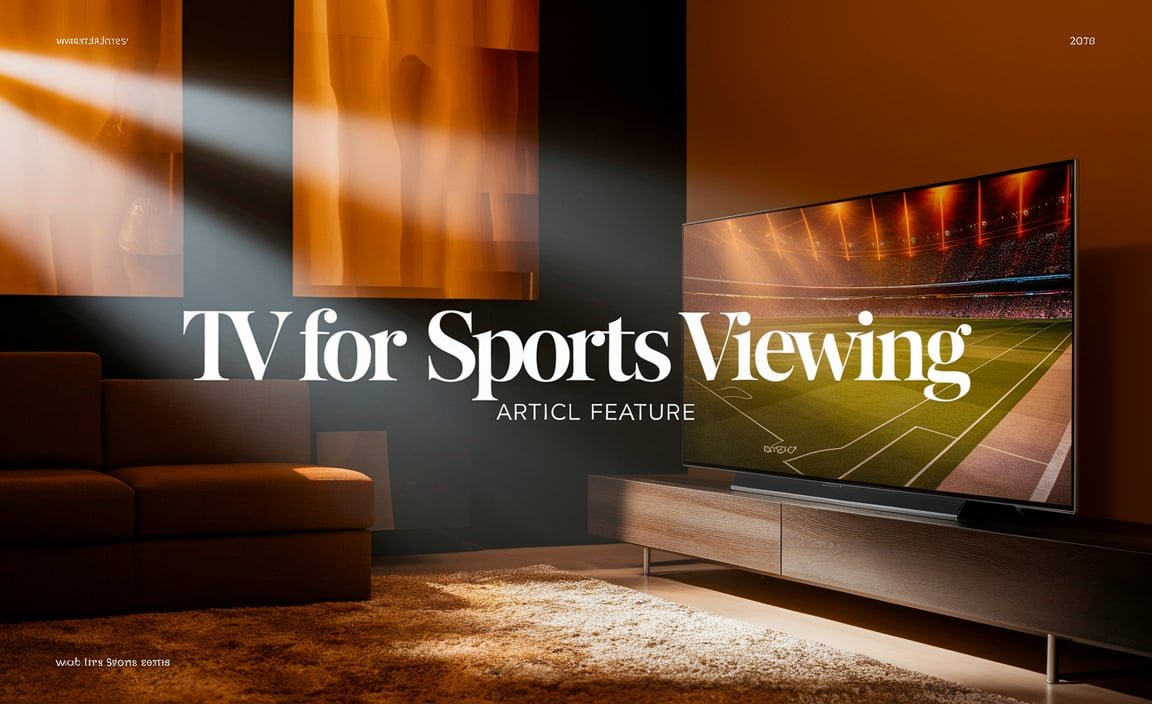Best TV Under $700 For Movies: Essential Pros & Cons
Finding the best TV under $700 for watching movies can feel like a quest! You want stunning visuals, vibrant colors, and deep blacks without breaking the bank. Don’t worry, we’re here to help you navigate the options. This guide breaks down what truly matters for movie lovers on a budget, making your choice easy and confident. Let’s dive into finding that perfect cinematic experience for your living room!
Why Your Next TV Matters for Movie Night
Movie nights are special. They’re a chance to escape, get lost in a story, and truly experience what filmmakers intended. But a subpar TV can quickly turn that magic into a muddy mess. Flickering images, washed-out colors, and lost details can pull you right out of the movie. It’s frustrating when you’re trying to get the best bang for your buck, aiming for that theater-like feel at home.
The good news is, you don’t need to spend a fortune to get a great movie-watching experience. Many TVs under $700 offer fantastic picture quality, smart features, and impressive sound capabilities. It’s all about knowing what to look for. We’ll guide you through the key features that make a TV shine for movies, so you can stop searching and start enjoying.
Understanding the Essentials for Movie-Watching TVs
When we talk about the “best TV under $700 for movies,” we’re looking for certain qualities that really make a difference. These aren’t just fancy terms; they directly affect how good your movies will look and sound. Let’s break down the most important ones:
- Picture Quality: This is king! It covers resolution (4K is standard now), contrast ratio (how bright whites are versus how dark blacks are), and color accuracy (how true-to-life the colors appear). For movies, deep blacks and great contrast are crucial for atmosphere and detail in dark scenes.
- Panel Type: The most common panel types you’ll see are LED (including QLED) and OLED. While OLEDs offer the absolute best blacks and contrast, they are usually well above our $700 budget. Within the under-$700 range, QLED technology often provides brighter colors and better contrast than standard LEDs.
- HDR Support: High Dynamic Range (HDR) dramatically improves the contrast and color range of a TV. Common HDR formats include HDR10, HDR10+, and Dolby Vision. Dolby Vision is often considered the premium standard for movies, offering the best possible dynamic range and color.
- Refresh Rate: This is how many times the image on the screen updates per second. A higher refresh rate (like 120Hz) makes motion look smoother, which is great for fast-paced action movies or sports. For general movie watching, 60Hz is often sufficient, but 120Hz is a nice bonus if you can find it in this price range.
- Smart TV Platform: Most modern TVs come with built-in smart features, offering access to streaming apps like Netflix, Disney+, and Amazon Prime Video. Popular platforms include Google TV, Roku TV, webOS, and Tizen. The best one for you depends on your preferred apps and ease of use.
- Sound Quality: While TVs have improved, built-in speakers are rarely amazing for movie audio. For the best experience, consider a soundbar or external audio system. However, some TVs offer decent sound for casual viewing.
Top Contenders: Best TVs Under $700 for Movies
Navigating the options can be tough, but several brands consistently deliver great value in the sub-$700 category, especially when sales hit. Here are some models and series that frequently offer excellent performance for movie buffs on a budget. Remember, prices can fluctuate, so always check current deals!
Hisense U8K/U8H Series (Often Falls Around $700 on Sale)
Hisense has been a major player in offering high-end features at affordable prices. Their U8K and the slightly older U8H models are often praised for their impressive brightness, Mini-LED backlighting (which allows for better contrast and deeper blacks than standard LED TVs), and excellent HDR performance. For movies, this means vibrant colors and details that pop, even in challenging scenes.
Pros:
- Excellent brightness for HDR content.
- Good contrast and black levels thanks to Mini-LED.
- Supports Dolby Vision, HDR10+, HDR10, and HLG.
- Smooth motion handling.
- Feature-rich smart TV platform (Google TV or Roku TV, depending on model).
Cons:
- Sound quality is decent but an external audio system is recommended for full immersion.
- Viewing angles can be somewhat limited compared to premium TVs.
- Occasional software glitches can occur with smart TV platforms.
TCL QM8/Q7 Series (Often Falls Around $700 on Sale)
TCL is another brand that consistently punches above its weight class. Their QLED models, particularly the QM8 (if you can snag it on sale) or the Q7 series, offer a great balance of color, brightness, and gaming features. They often employ quantum dot technology for brighter, more vibrant colors, which is a big win for movie enthusiasts who appreciate a lively picture.
Pros:
- Vibrant colors due to QLED technology.
- Good brightness for HDR, making highlights really stand out.
- Strong gaming features, which often translate to good motion handling for movies too.
- Most models support Dolby Vision and HDR10+.
- Roku TV platform is user-friendly and has a vast app selection.
Cons:
- Black levels can be good but might not reach the depths of Mini-LED or OLED.
- Some users report occasional uniformity issues with the backlight (though this is less common on higher-tier models).
- Default picture settings might need tweaking for optimal movie viewing.
Sony BRAVIA XR X90L/X90K Series (Watch for Sales to hit Under $700)
Sony is renowned for its exceptional picture processing. While their higher-end models are out of reach, you can sometimes find their X90L or the previous X90K series dipping below the $700 mark during major sales events. These TVs offer Sony’s Cognitive Processor XR for incredibly lifelike images, excellent upscaling, and generally very good contrast.
Pros:
- Outstanding motion handling and image processing.
- Great upscaling of lower-resolution content.
- Good color accuracy out of the box.
- Reliable smart TV platform (Google TV).
- Often has decent built-in speakers for its class.
Cons:
- Typically priced higher, making it harder to find under $700 unless on a significant sale.
- Brightness might not be as extreme as some competitors in this price range, impacting peak HDR impact.
- Local dimming, while present, might not be as advanced as in pricier sets.
Samsung QLED (e.g., Q60C/Q70C Series – Watch for Sales)
Samsung’s QLED technology is designed to deliver bright, vibrant colors. Their Q60C (entry-level QLED) or the Q70C (mid-range QLED) can often be found under or around $700, especially in 55-inch or sometimes 65-inch sizes during sales. These TVs excel at making colors pop, which can be great for animated films or content with bright, saturated palettes.
Pros:
- Samsung’s QLED offers excellent color volume and vibrancy.
- Sleek, stylish design common across Samsung TVs.
- Tizen smart TV platform is fast and intuitive, with great app support.
- Good for gaming with low input lag.
Cons:
- These specific models typically don’t support Dolby Vision, usually opting for HDR10+.
- Black levels and contrast might not be as strong as Mini-LED or OLED options.
- Local dimming is often less effective or absent on these mid-tier QLEDs, leading to slightly less impactful HDR contrast.
Key Features to Consider for Your Movie TV
Beyond the specific models, let’s dive a bit deeper into the crucial features. Understanding these will empower you to make the right choice, even if the exact models listed aren’t available or on sale when you’re shopping.
Resolution: Why 4K is Essential
For any TV purchase today, especially one focused on movies, 4K resolution (3840 x 2160 pixels) is the standard. It offers four times the detail of Full HD (1080p). More pixels mean sharper images, finer details, and a more immersive experience, particularly on larger screen sizes. You’ll notice this difference immediately in the clarity of text, the texture of clothing, and the overall realism of scenes. Thankfully, 4K is now the norm even in the budget segment, so finding a 4K TV under $700 is very achievable.
HDR: Bringing Movies to Life
High Dynamic Range (HDR) is a game-changer for picture quality. It allows TVs to display a wider range of brightness and color than standard dynamic range (SDR) content. This means:
- Brighter Highlights: Sunlight glinting off water, explosions, or bright lights will look much more intense and realistic.
- Deeper Blacks: Shadow details in dark scenes will be more visible without completely losing information.
- Wider Color Gamut: Colors will be richer, more nuanced, and more lifelike.
You’ll typically see these HDR formats on TVs:
- HDR10: The basic, open standard. Most HDR content uses this.
- HDR10+: An improvement over HDR10, adding dynamic metadata that can adjust picture settings scene-by-scene. Popular on Samsung and some other platforms.
- Dolby Vision: Considered the premium HDR format. It uses dynamic metadata and often offers a slightly better experience than HDR10+. Many streaming services like Netflix and Disney+ heavily utilize Dolby Vision for their movies and shows.
- HLG (Hybrid Log-Gamma): Primarily used for broadcast television.
When choosing, look for TVs that support Dolby Vision and HDR10+ if possible, as these offer the most dynamic and adaptable HDR experiences for movie watching. Even if a TV only supports HDR10, it’s still a significant upgrade from SDR.
Contrast Ratio and Black Levels: The Soul of a Movie Picture
This is arguably the most critical factor for cinematic picture quality. Contrast ratio refers to the difference between the brightest white and the darkest black a TV can produce. Deep, inky blacks are essential for creating atmosphere, depth, and realism, especially in dark movie scenes. Without good blacks, dark areas can look muddy or grayish, and you lose detail.
Why it matters for movies: Imagine watching a sci-fi epic in space or a dramatic thriller set at night. If the blacks are poor, you won’t see the stars, the subtle shadows, or the textures in the darkness. This is where technologies like:
- Local Dimming: This feature allows LEDs in different zones of the backlight to be dimmed or turned off independently. This significantly improves contrast and black levels. More dimming zones generally mean better performance.
- Mini-LED: A more advanced form of LED backlighting that uses many more, much smaller LEDs. This allows for finer control over dimming zones, leading to much better contrast and blacks, crucial for great movie picture quality.
- QLED: While QLED primarily enhances color and brightness, brands often combine QLED with advanced backlighting (like Mini-LED) for excellent contrast.
OLED TVs offer perfect blacks because each pixel can be turned off individually, but they are typically priced out of the sub-$700 range. For budget TVs, look for “Mini-LED” or “full-array local dimming” in the specifications, as these indicate better contrast capabilities.
Color Accuracy and Gamut
Beyond just brightness, how accurately and vibrantly the TV displays colors is vital. Quantum Dot (QLED) technology, used by brands like Samsung and TCL, is excellent at producing a wider color gamut and more saturated, lifelike colors. This means you’ll see richer reds, deeper blues, and more vibrant greens, making everything from cartoons to action movies pop.
What to look for:
- Quantum Dot (QLED): Often offers the best color vibrancy and volume in this price range.
- Wide Color Gamut (WCG): Indicates the TV can display a broader range of colors, essential for HDR content.
- Color Accuracy: While factory calibration varies, good TVs will aim for truer-to-life colors. You can often fine-tune this with calibration settings.
Motion Handling and Refresh Rate
When you’re watching fast-paced action scenes, a car chase, or even just a character moving across the screen, you want the motion to be smooth and clear, not blurry or jerky. This is where refresh rate comes in.
- 60Hz Refresh Rate: Standard for most TVs. It’s perfectly adequate for general TV watching and most movies where scenes don’t change at breakneck speed.
- 120Hz Refresh Rate: Offers smoother motion. This is ideal for fast action and sports. While less common in the absolute cheapest TVs under $700, some higher-end models in this bracket (or on sale) might offer 120Hz.
- Motion Interpolation: Many TVs have settings that can “create” frames to make motion smoother. While this can look good, it can also create the “soap opera effect,” making movies look too artificial. Many movie buffs prefer to turn this off and rely on the native refresh rate.
For movie watching specifically, a good 60Hz panel with excellent motion processing can be more important than a native 120Hz panel with poor processing. However, if you also plan to game or watch a lot of sports, 120Hz becomes a much more significant advantage.
Smart TV Platforms: Your Gateway to Content
Your TV’s smart platform is how you access streaming apps and other online content. Popular platforms include:
- Google TV: Found on many Sony, Hisense, and TCL models. It’s robust, offers a personalized recommendation engine, and has access to a vast library of apps via the Google Play Store.
- Roku TV: Known for its simplicity and ease of use. Found on many TCL and Hisense models, it offers a straightforward navigation system and a massive selection of streaming channels.
- Tizen (Samsung): Samsung’s proprietary OS. It’s fast, visually appealing, and offers all the major streaming apps.
- webOS (LG): LG’s platform, also known for its ease of use and clean interface. While LG OLEDs are premium, their NanoCell or Crystal UHD models might occasionally fall into this price range on sale.
Ultimately, the “best” platform is subjective and depends on your personal preference. If you’re already invested in the Amazon, Google, or Apple ecosystems, you might lean towards a TV that integrates well with them.
Essential Pros and Cons Table
To help you visualize the trade-offs, here’s a table summarizing the common pros and cons you might find when shopping for the best TV under $700 for movies. This applies broadly to the types of TVs you’ll encounter in this price bracket.
| Feature/Category | Pros | Cons |
|---|---|---|
| Price Point ($500 – $700) | Excellent value; achieves high-end features once reserved for expensive models. | Requires careful research to identify the best deals; compromises are often made compared to premium TVs. |
| 4K Resolution (UHD) | Standard on most models; provides significantly sharper and more detailed images for immersive viewing. | Less noticeable benefit on smaller screen sizes unless viewed up close. |
| HDR Support (Dolby Vision, HDR10+) | Vastly improved contrast, color, and brightness for a more vibrant and lifelike picture. Crucial for modern movie content. | Not all models support the premium Dolby Vision format; performance varies based on peak brightness and local dimming. |
| Panel Technology (QLED/Mini-LED within budget) | Delivers brighter colors and better contrast than standard LED. Mini-LED offers superior local dimming and black levels. | OLED is generally out of budget; some Q
|






